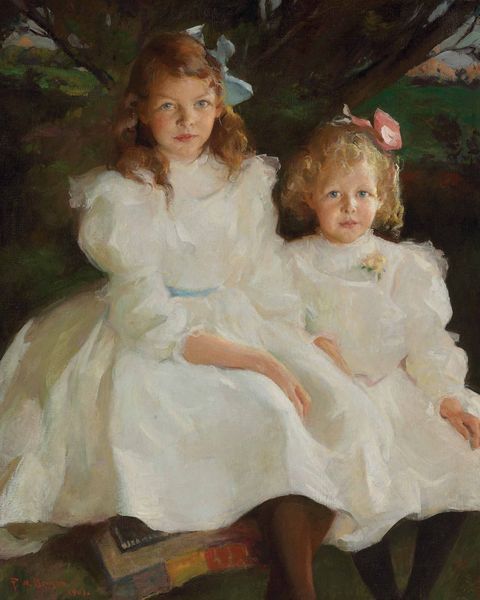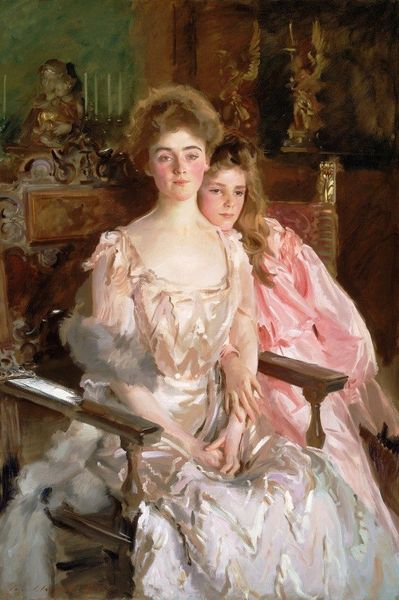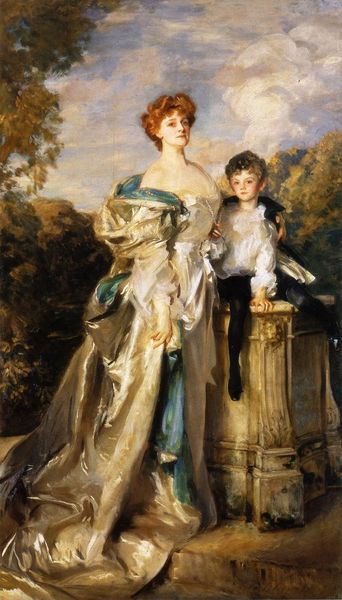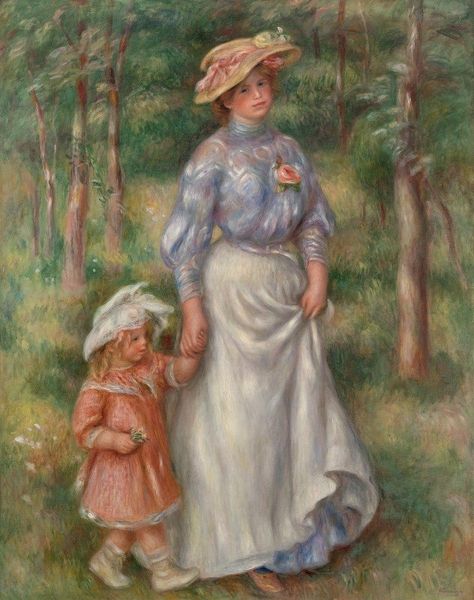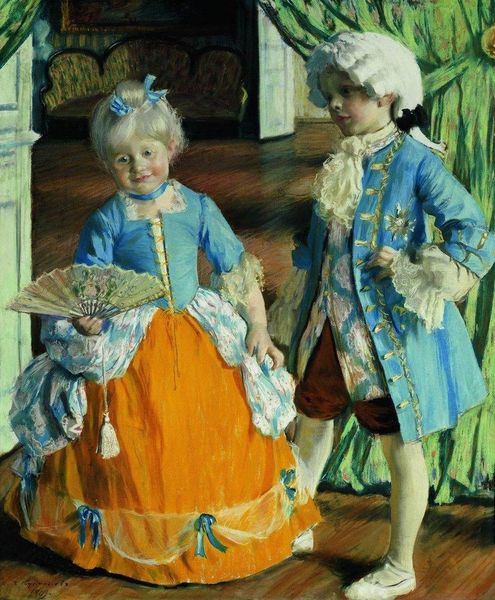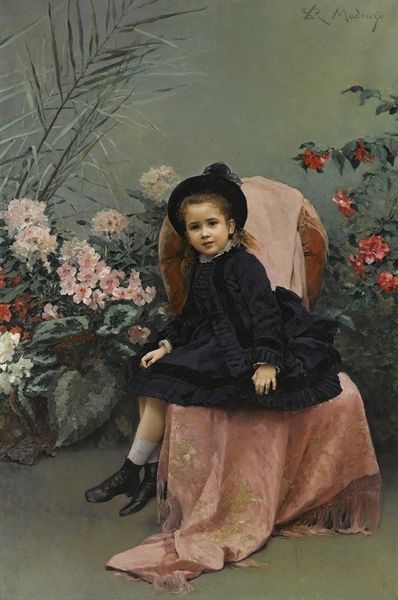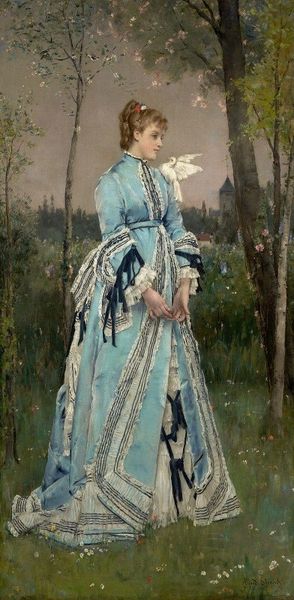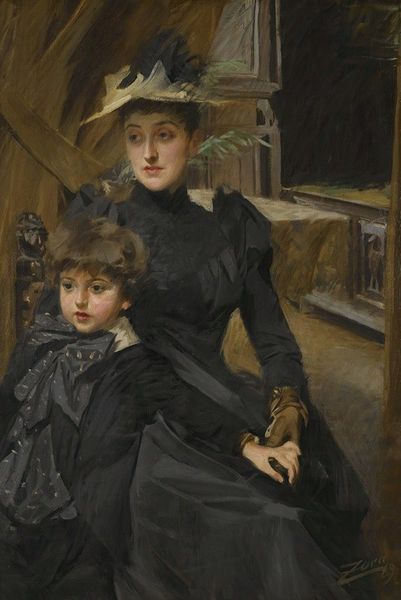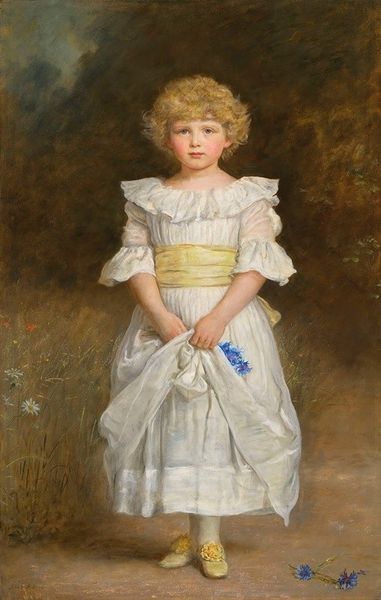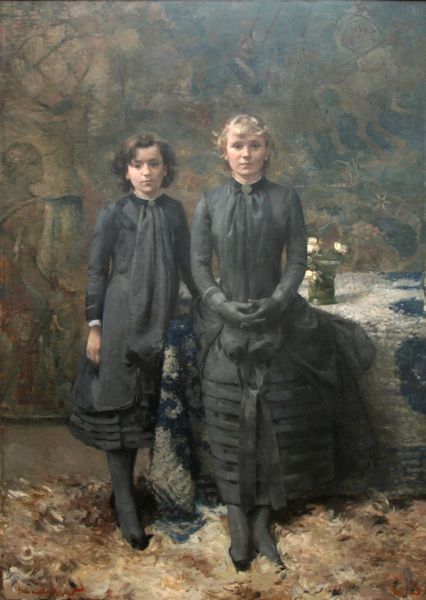
Copyright: Public Domain: Artvee
Curator: At first glance, I'm struck by the almost unsettling formality of this scene. The figures are positioned so deliberately. Editor: Indeed. What we’re looking at is Léon François Comerre’s oil on canvas titled "La promenade du dimanche," completed in 1875. It offers a window into the fashion and social customs of the late 19th century. Curator: Fashion dominates. The eye is immediately drawn to the pink ruffles, the elaborate ribbons. But how do these details signify the sitters’ class or position in society? Editor: Well, consider the historical context: these are likely members of the bourgeoisie flaunting their wealth and leisure. A “Sunday promenade” was a ritual. It was a public display, reinforcing social hierarchies and aspirations through attire and presentation. Curator: And look at the formal, static poses of the figures. It gives them the effect of an almost theatrical display of respectability. It seems very deliberate. The woman's gaze, direct yet impersonal, further adds to this effect. She is not just being, but being *seen*. Editor: Absolutely. Comerre positions his figures carefully within the setting, framed by the encroaching foliage which acts like curtains on a stage. It focuses our attention entirely on them as social actors. I see the thick impasto on their faces, adding depth to their presence. How does that textural quality change your reading of the image? Curator: The application adds complexity to an otherwise polished scene. The very materiality seems to suggest a weightiness. Even through his choice of palette, Comerre is contrasting the fleeting ritual with something far more material. Editor: Precisely. But think too how exhibitions during that period reinforced an academic style focused on clarity and technique. Paintings such as this one would not merely depict a subject, they acted as mirrors reflecting idealized social norms back to audiences, even dictating behavior. Curator: That does make one ponder about the act of looking itself and what role this painting played within Parisian culture in shaping and reflecting those ideas. Editor: Examining the politics of imagery within artworks truly can open new dialogues. Curator: Indeed. Analyzing both form and cultural framework illuminates art's purpose as being more than aesthetic.
Comments
No comments
Be the first to comment and join the conversation on the ultimate creative platform.

